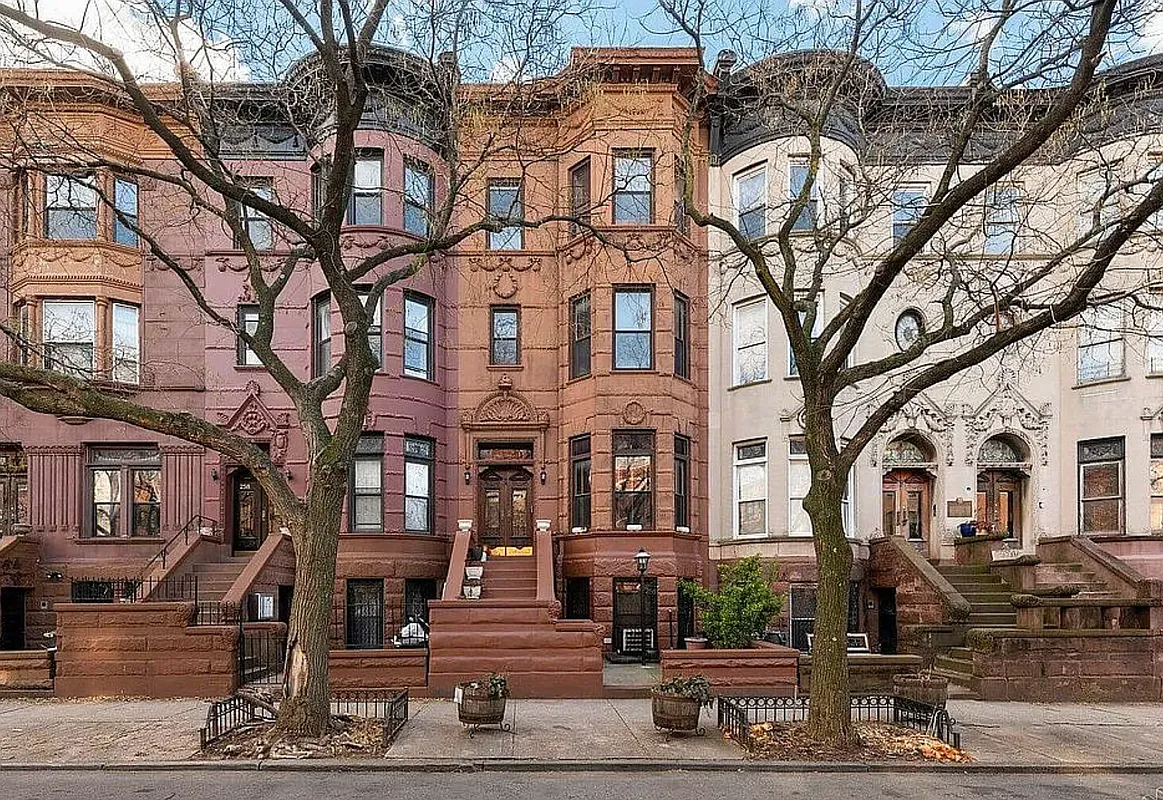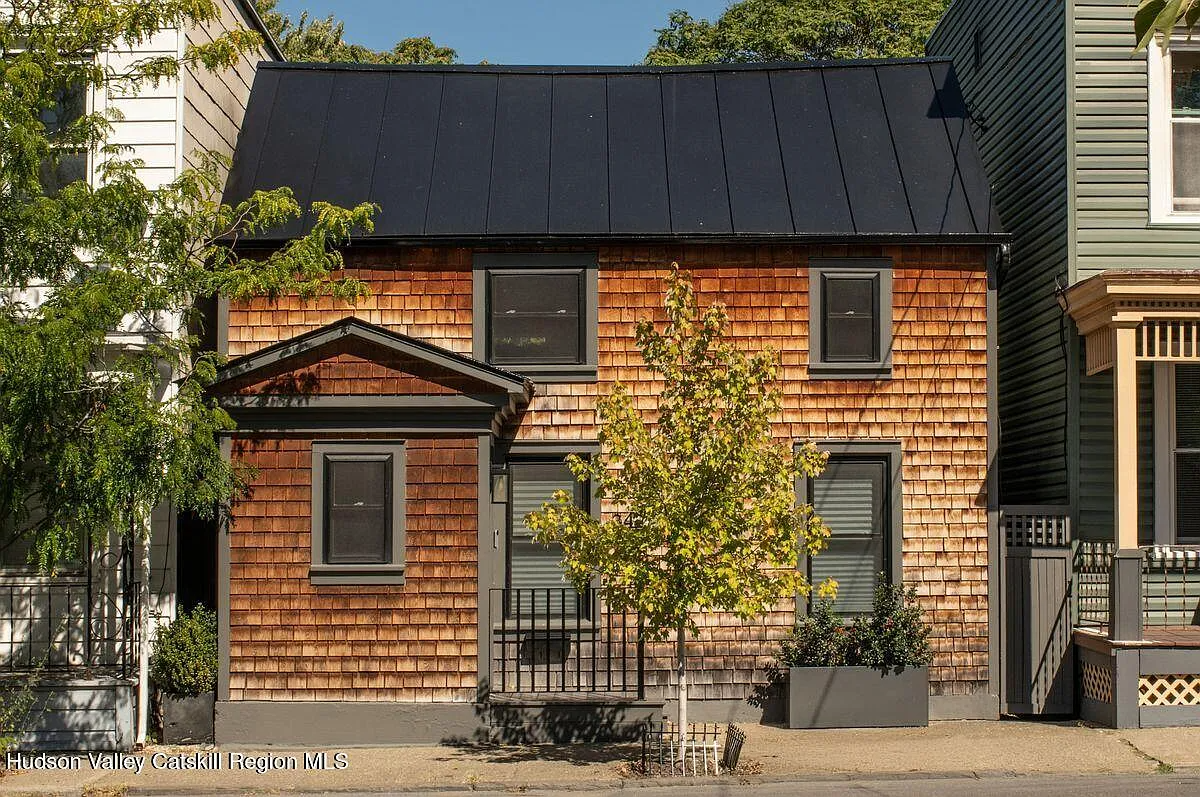Manhattan Housing Prices Take a Dive
Tough times across the river. The grim first quarter stats—volume down 60 percent, average co-op prices down 24 percent—may only be the tip of the iceberg. Particularly hard hit is the high end of the market, where 350 listings clog the slow-moving pipeline of $10 million-plus properties. (Official condo sales price numbers held up, but…

 Tough times across the river. The grim first quarter stats—volume down 60 percent, average co-op prices down 24 percent—may only be the tip of the iceberg. Particularly hard hit is the high end of the market, where 350 listings clog the slow-moving pipeline of $10 million-plus properties. (Official condo sales price numbers held up, but that’s only because of long-standing contracts finally closing; condos still on the market are at a virtual stand-still.) Those who need to sell are having to resort to massive discounts: One philanthropist recently had to cut the original asking price on her 17-room West End Avenue apartment of $13.5 million by 46 percent to get a deal done, and even then she had to chop the space up into two apartments to find buyers. Jonathan Miller points to the lack of available credit for big purchases—any loan above $729,750 is harder to get and more expensive than conforming loans. It certainly doesn’t bode well for more expensive properties in Brooklyn, but at least we have more condos and co-ops that can be bought using conforming loans!
Tough times across the river. The grim first quarter stats—volume down 60 percent, average co-op prices down 24 percent—may only be the tip of the iceberg. Particularly hard hit is the high end of the market, where 350 listings clog the slow-moving pipeline of $10 million-plus properties. (Official condo sales price numbers held up, but that’s only because of long-standing contracts finally closing; condos still on the market are at a virtual stand-still.) Those who need to sell are having to resort to massive discounts: One philanthropist recently had to cut the original asking price on her 17-room West End Avenue apartment of $13.5 million by 46 percent to get a deal done, and even then she had to chop the space up into two apartments to find buyers. Jonathan Miller points to the lack of available credit for big purchases—any loan above $729,750 is harder to get and more expensive than conforming loans. It certainly doesn’t bode well for more expensive properties in Brooklyn, but at least we have more condos and co-ops that can be bought using conforming loans!
Housing Slump Hits Manhattan [NY Times]
Photo by yujie





the old jumbo size was something in the 400s, and one of the early govt responses to the crisis was to get fannie and freddie to raise it. The reason it matters is that securities cut out of pools of loans that fannie and freddie buy (“conforming” loans) are guaranteed by the government. so investors accept very low interest on them, knowing that the risk of loss is the same as the risk of loss on treasury bonds. This savings gets passed through to homebuyers.
Jumbo loans are not “conforming”. they are securitized by investment banks. the credit risk is mitigated by subordination instead of government guarantees: some investor takes the “first loss” from the pool (slight oversimplification) to make the remaining “second loss” less risky.
The two securitization processes are similar, but the former product is not considered a “credit” markets product, because there is no borrower-related credit risk in the payment of interest and principal.
In the latter, there is, and that makes it part of the “credit markets”, which are frozen. That means investors require a huge interest rate to take the risk, and that COST is passed on to borrowers.
Expanding the conforming limit up into the 700s allows more borrowers to get the interest cost savings passed through to them, because more loans can qualify for the government guarantee.
This is actually a good thing for high-end homebuyers. But still, for mortgages in the millions, you’re out in the cold.
Sam;
Actually,the conforming loan limit used to be lower. I don’t remember the exact number, but it was something on the order of $500,000. It was only recently moved up to this limit. It was part of the stimulus plan. Maybe that explains the screwy number – probably derived by some Senate staffer at 11.30PM at night.
Your bottom line advice is correct.
bottom line: If you wish to buy real estate today you better have a lot of money saved up and sitting in a nice money market fund or boxspring mattress.
Mistake to rely on anecdotal for evidence in residential: NYT says
One philanthropist recently had to cut the original asking price on her 17-room West End Avenue apartment of $13.5 million by 46 percent to get a deal done, and even then she had to chop the space up into two apartments to find
Betcha ask was out of line, combination not completed – just a wall down, size way usual for that area compared to CPW and apartment generally quirky.
Someone took the bait, I see. Glad you remember your grade school math.
benson, thanks.
I’m just suprised that the figure is such an odd (as in not rounded out) number. 729,750 is a pretty big mortgage though. I can see why banks would want to classify anything above this as a “jumbo”.
I think the figure used to be a million, but I may be mis-remembering.
I have personally never borrowed more than $500,000 to buy anything.
Sam;
The conforming loan limit is determined by Freddie Mac and Fannie Mae. Basically, it represents the biggest loan they will purchase in their role to create a secondary market for loan originations. How Fannie and Freddie determine this number is beyond me.
I agree with PeteBklyn that this is a poorly-written article.
I’ll repeat my mantra: the only way to analyze a market is to look at average sales price (ASP) on a per-square-foot basis, for properties in the same class (example: Manhattan condos). Stories about folks lowering their asking price make for great reading, but does not indicate anything about the actual market. As a hypothetical example: if someone purchases a place for $1M in 2004, asks for $2.5M in 2009, and settles for $1.8M, the ASP has gone up, not down.
has anybody tried to get a jumbo loan? from what I understand you cant get a Jumbo for more then around 600,000 even though the gov says it is 730,00. Wont matter for most brownstones though. The spread s huge between conforming and non and I dont think that will chage much. Obama dont care about rich people or speculators.
Though I am no expert, as I understand it 729,750 is the number that represents the new maximum conforming loan before you hit jumbo. Loans under this will have a lower interest rate than those above that. Only a few banks are doing this, however.